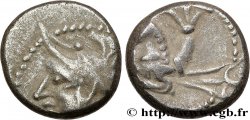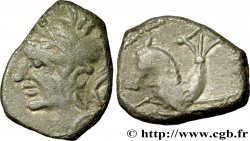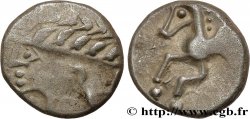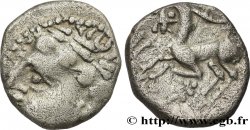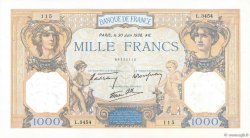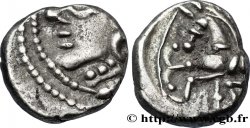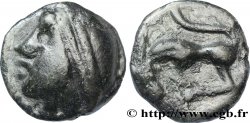v15_0458 - GALLIA - ALLOBROGES (Region di Dauphine) Denier au cheval galopant et au “caducée”
MONNAIES 15 (2002)
Начальная цена : 195.00 €
Назначить цену : 400.00 €
Цена реализации : 195.00 €
Количество ставок : 1
Максимальная предлагаемая цена : 210.00 €
Начальная цена : 195.00 €
Назначить цену : 400.00 €
Цена реализации : 195.00 €
Количество ставок : 1
Максимальная предлагаемая цена : 210.00 €
Тип Denier au cheval galopant et au “caducée”
Дата: Ier siècle avant J.-C.
Металл: silver
Диаметр: 13,5 mm
Ориентация осей монеты: 2 h.
Вес: 1,85 g.
Редкость: R1
Комментарии о состоянии
Flan large et ovale, avec plat de frappe derrière la tête
Ссылки в каталоге: :
Происхождение:
Cet exemplaire provient de MONNAIES II, 21 juin 1997, n° 110
Лицевая сторона
Аверс: легенда: ANÉPIGRAPHE.
Аверс: описание: Tête laurée à gauche.
Обратная сторона
Реверс: легенда: ANÉPIGRAPHE.
Реверс: Описание: Cheval galopant à gauche ; au-dessus, “caducée”.
Комментарий
Cet exemplaire, lors de son classement dans MONNAIES II avait semblé être fourré en raison de la petite tache sur le menton. Associé à son poids léger, cette hypothèse semble avérée, bien que cette monnaie soit d’un aspect très agréable et d’une excellente conservation. Le petit numéro sur le revers indique une provenance d’un trésor étudié sans doute à la fin du XIXe ou début du XXe siècle.
This example, when classified in COINS II, appeared to be filled due to the small stain on the chin. Combined with its light weight, this hypothesis seems to be true, although this coin has a very pleasant appearance and is in excellent condition. The small number on the reverse indicates a provenance from a hoard studied probably in the late 19th or early 20th century.
This example, when classified in COINS II, appeared to be filled due to the small stain on the chin. Combined with its light weight, this hypothesis seems to be true, although this coin has a very pleasant appearance and is in excellent condition. The small number on the reverse indicates a provenance from a hoard studied probably in the late 19th or early 20th century.








 Cообщить об ошибке
Cообщить об ошибке Распечатать страницу
Распечатать страницу Отправить мой выбор
Отправить мой выбор Задать вопрос
Задать вопрос Consign / sell
Consign / sell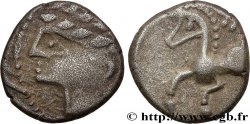
 Информация
Информация